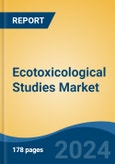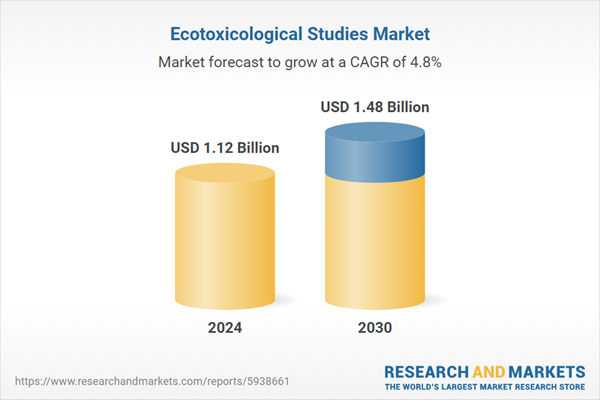Speak directly to the analyst to clarify any post sales queries you may have.
10% Free customizationThis report comes with 10% free customization, enabling you to add data that meets your specific business needs.
It encompasses a wide range of subjects, from assessing the toxicity of chemicals to evaluating the ecological consequences of contamination. The contaminants studied in ecotoxicological research include chemicals, such as pesticides, industrial pollutants, pharmaceuticals, heavy metals, and organic compounds. Other substances like microplastics and nanomaterials are also a focus of study. Ecotoxicological studies investigate the effects of contaminants on various ecological components, including aquatic and terrestrial organisms (e.g., fish, insects, plants), entire ecosystems, and even humans if they are exposed to contaminated environments.
Key Market Drivers
Technological Advancements
Advancements in technology have played a significant role in improving the efficiency, accuracy, and scope of ecotoxicological studies. These technological developments have enhanced researchers' ability to assess the effects of contaminants on ecosystems and organisms. High-Throughput Screening (HTS): HTS technology allows researchers to rapidly test many samples or substances simultaneously. In ecotoxicology, this is valuable for assessing the toxicity of various compounds and their effects on different organisms. It enables the generation of extensive datasets for risk assessment. Genomics, transcriptomics, proteomics, and metabolomics have provided a deeper understanding of how contaminants affect organisms at the molecular level.These technologies help identify biomarkers of exposure and toxicity, shedding light on the mechanisms underlying ecotoxicological responses. The increasing volume of data generated in ecotoxicological studies requires advanced data management and analysis techniques. Bioinformatics and data analytics tools are used to process, interpret, and visualize complex data, enabling researchers to derive meaningful insights. Remote sensing technologies, including satellite and aerial imagery, are used to monitor environmental changes, land use, and habitat alterations. These data sources help ecotoxicologists assess the impact of contaminants on large-scale ecosystems and track changes over time.
Key Market Challenges
Climate Change Interactions
Climate change can lead to changes in temperature, precipitation patterns, and water availability. These altered environmental conditions can affect the behavior and toxicity of contaminants, making it challenging to predict their impact accurately. Climate change can lead to shifts in the distribution of species, both in aquatic and terrestrial ecosystems. This can alter the exposure of organisms to contaminants and affect the outcome of ecotoxicological studies. Some contaminants may become more toxic or more bioavailable under warmer temperatures. Understanding these temperature-dependent effects is crucial for assessing the impact of contaminants in a changing climate.Climate change is causing ocean acidification due to increased carbon dioxide levels in the atmosphere. This can affect the toxicity of certain contaminants, especially in marine ecosystems. Climate change is associated with an increase in the frequency and severity of extreme weather events, such as storms, floods, and droughts. These events can result in sudden contaminant releases and ecological disruptions, requiring rapid response and assessment. Climate change can disrupt food webs and trophic interactions in ecosystems. Understanding how these shifts affect the transfer of contaminants through the food chain is challenging but crucial for ecotoxicological assessments. Ecotoxicological studies often focus on short-term acute effects. Climate change interactions require a greater emphasis on long-term studies to assess chronic effects and the cumulative impact of contaminants under changing environmental conditions.
Key Market Trends
Eco-Toxicogenomics
Eco-toxicogenomics provides a molecular-level understanding of how contaminants affect living organisms. It allows researchers to study gene expression, protein synthesis, and metabolic pathways to identify specific molecular mechanisms underlying toxicity. Genomic approaches help in the identification of biomarkers that indicate exposure to contaminants and predict potential adverse effects on organisms. These biomarkers can serve as early warning signals for environmental contamination. By analyzing the transcriptome and proteome of organisms, eco-toxicogenomics assesses the impact of contaminants on gene expression and protein synthesis.This provides insights into the mechanisms of toxicity and helps identify key pathways affected by pollutants. Genomic technologies allow for high-throughput analysis, enabling the simultaneous study of thousands of genes and proteins in response to contaminants. This accelerates the research process and generates large datasets for comprehensive assessments. Eco-toxicogenomics is used for environmental monitoring to assess the health of ecosystems and the potential risks posed by contaminants.
It provides a more holistic view of the ecological impact of pollutants. Genomic tools facilitate comparative studies, allowing researchers to assess how different species or populations respond to contaminants. This can provide insights into species-specific sensitivities and adaptations. Eco-toxicogenomics can assess long-term and chronic effects of contaminants, going beyond traditional short-term toxicity tests. This is crucial for understanding how pollutants may impact ecosystems over time.
Key Market Players
- Smithers Group Inc
- SGS SA
- Covance, Inc. (Laboratory Corporation of America Holdings)
- INTOX PVT. LTD. (Aragen Life Sciences Pvt. Ltd.)
- Fera Science Limited
- Charles River Laboratories, Inc.
- Noack Laboratorien GmbH
- Eurofins Scientific SE
- ALS Limited
- Aqua Survey, Inc.
Report Scope:
In this report, the Global Ecotoxicological Studies Market has been segmented into the following categories, in addition to the industry trends which have also been detailed below:Ecotoxicological Studies Market, By Service:
- Aquatic Ecotoxicology
- Sediment Ecotoxicology
- Terrestrial Ecotoxicology
- Avian Ecotoxicology
- Pollinator Testing
Ecotoxicological Studies Market, By region:
- North America
- United States
- Canada
- Mexico
- Asia-Pacific
- China
- India
- South Korea
- Australia
- Japan
- Europe
- Germany
- France
- United Kingdom
- Spain
- Italy
- South America
- Brazil
- Argentina
- Colombia
- Middle East & Africa
- South Africa
- Saudi Arabia
- UAE
Competitive Landscape
Company Profiles: Detailed analysis of the major companies present in the Global Ecotoxicological Studies Market.Available Customizations:
With the given market data, the publisher offers customizations according to a company's specific needs. The following customization options are available for the report.Company Information
- Detailed analysis and profiling of additional market players (up to five).
This product will be delivered within 1-3 business days.
Table of Contents
Companies Mentioned
- Smithers Group Inc
- SGS SA
- Covance, Inc. (Laboratory Corporation of America Holdings)
- INTOX PVT. LTD. (Aragen Life Sciences Pvt. Ltd.)
- Fera Science Limited
- Charles River Laboratories, Inc.
- Noack Laboratorien GmbH
- Eurofins Scientific SE
- ALS Limited
- Aqua Survey, Inc.
Table Information
| Report Attribute | Details |
|---|---|
| No. of Pages | 178 |
| Published | March 2025 |
| Forecast Period | 2024 - 2030 |
| Estimated Market Value ( USD | $ 1.12 Billion |
| Forecasted Market Value ( USD | $ 1.48 Billion |
| Compound Annual Growth Rate | 4.7% |
| Regions Covered | Global |
| No. of Companies Mentioned | 10 |









